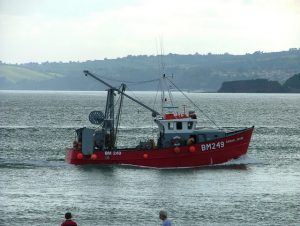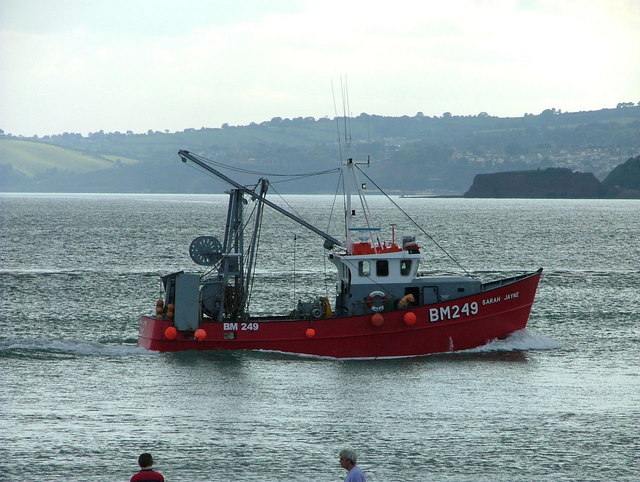The United Kingdom and Dover sole have a long and interesting history. This is obvious from the name alone. Dover itself was where the fish was originally sourced then brought to London markets. All this took place centuries ago when the fishing industry really took off. Today Dover sole is still an important part of the industry as British fleets continue to fish those waters, which are as abundant today as they were back then.
Fishing for Dover Sole

Sole is a flatfish that was actually well known and eaten in France before the UK. It’s unique flavour and texture eventually inspired influential cultural recipes like Poached Sole Bonne Femme, Sole Veronique and Sole a la Meunière. The fish is usually considered too tough to cook too soon after being caught. They are normally left a couple of days for their unique flavour and texture to reach a certain point; this is when the sole is at its tastiest and ideal for serving in certain recipes. To order your fish click here
The fish itself has its eye on the right-hand side of its body and belongs to a subspecies of flatfish called Soleidae. They take several years to reach maturity, and young sole are not targeted by fishermen for multiple reasons, not only is it bad for the species on the whole, (as it prevents the fish from being able to breed before being caught and eaten) but only a mature sole contains the sweet and unique taste that makes them so popular.
Males are smaller than females on average, with the largest recorded female being over 70cm long and weighing over 3kg. The record for the longest living sole is believed to be 26 years old. The fish are also nocturnal animals choosing to hide in the sand during the day before coming alive after dark. This may be due to them being an active predator, choosing to hunt and eat at night. This means that to have more chance of capturing sole the fishing fleets need to wait until nighttime for the best results. Fishing fleets during the often target Dover sole during the spring; this is when they are mating. This is when they are at their largest and most active, making them easier targets than usual.
Difficult to Catch
Dover sole is notorious as escape artists, being able to dart back down into the sand in a blink of an eye. Like their flatfish cousins plaice and halibut, when sole are concealed in the sand they are extremely difficult to locate due to their light brown sandy colour. This also makes the effective predators as well as savvy prey in escaping their own predators, we included.
The UK has such an important history with Dover sole supporting the industry to make sure we can effectively farm and source sole is more important than ever. Maintaining and working fisheries is a costly affair, and it’s done to make sure the supply is kept up to match the demand. As eating health food or food that is high in protein is popular at the moment, Dover sole should indeed be one of the UK sourced fish we buy when considering what fish to put on our tables during our weekly shop.
Not only caught in UK waters
The name Dover sole has also been a controversial name; this is because many of the famous dishes associated with sole originated in France rather than the UK and the fish was caught and eaten there long before we started fishing for sole en masse. Not only that but the argument is sole as fish do not understand or respect territorial boundaries. Fish just swim where they will, and many of the popular fishing spots are closer to France than to Britain. Sole is also caught in Norway (and their Scandinavian neighbours) as well as in the Mediterranean! The name Dover sole, however, endures. Dover simply became known as a popular and reliable place where sole could be sourced and traded so the location of the port simply became synonymous with the fish
Sustainable Fishing
The Marine Conservancy Society once produced a guide known as the Good Fish Guide which advises that the best area and quality Dover sole are the fish caught in waters of the western English Channel or the North Sea, especially by the Hastings Fleet and the Cooperative Fishery Organisation, both of these groups hold a reputation of being certified and sustainable fishery groups. This means the name Dover sole is legitimate and hopefully ends the debate. Dover sole is still very much our fish, regardless of the history they also share with France. More importantly, this means that fish that is considered Dover sole and is caught by our fishing fleets is considered the best sole in the world. If this isn’t a perfect reason to eat more of it, then I don’t know what is.
In this day and incredibly health-conscious age, Dover sole is more popular than ever. Incorporated into many healthy diet plans, the sole is renowned for its enormous amount of health benefits. From vitamin D, B and omega-3, Dover sole has an almost incalculable amount of positive effects on the human body and can be eaten in so many recipes that it’s almost criminal to not indulge in it every once in a while.
Readily Available
Where once considered quite an expensive fish (which was due to the short supply and high demand), Dover sole is now readily available on every fish counter on the planet. Despite the price drop and abundance of sole in our supermarkets, the fish has kept its name and association with Dover. The port may now be more synonymous with booze cruises and controversial immigration news stories these days, instead of it’s beautiful white cliffs and importance to the fishing industry, but to those of us in the know, we will always acknowledge and celebrate Dover’s reputation as the place where the best sole in the world became famous. Where you may not know it from the now affordable price, Dover sole is the king of the flatfish and long may it reign.




